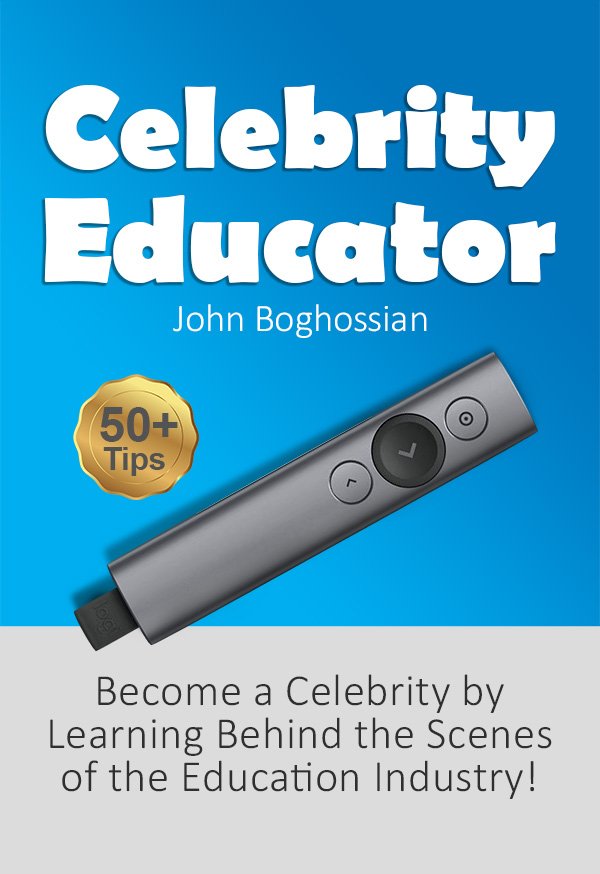Contents
Have you ever wondered what separates successful digital marketers from the rest? Reflecting on my journey through various marketing seminars, I remember one particular event where Eddie Malouf, the CEO of Bad Marketing, took the stage. His energy was intoxicating, and his insights were nothing short of revolutionary. He spoke about his experience in generating thirty-five million dollars a month through info products and the specific strategies that propelled him to that level of success—strategies that I couldn’t wait to share!
1. The Power of Video Sales Letters (VSLs)
Video Sales Letters, or VSLs, are becoming a cornerstone of modern digital marketing. But what exactly is a VSL? Simply put, it’s a video designed to sell a product or service. Typically, these videos range from 7 to 20 minutes long. They serve a specific purpose: to engage potential customers and drive them toward making a purchase.
Understanding the Structure and Purpose of a VSL
The structure of a VSL is crucial. It’s not just about throwing together some footage and hoping for the best. A well-crafted VSL follows a clear path. It starts with grabbing attention, then builds interest, creates desire, and finally prompts action. This is often referred to as the AIDA model: Attention, Interest, Desire, and Action.
Think of it like a story. Every good story has a beginning, middle, and end. In a VSL, you want to start with a hook. This could be a startling statistic or a relatable problem. From there, you build interest by explaining how your product solves that problem. You create desire by showcasing benefits and testimonials. Finally, you prompt action with a strong call to action.
Key Elements That Make a VSL Compelling
- Engaging Script: The words you choose matter. A compelling script keeps viewers interested.
- High-Quality Visuals: Good production quality can enhance credibility.
- Emotional Appeal: Connecting emotionally can drive decisions. People often buy based on feelings.
- Clear Call to Action: Tell viewers exactly what to do next. Should they click a link? Sign up? Make a purchase?
How to Leverage VSLs for Automated Sales
One of the best things about VSLs is their ability to work for you while you sleep. Once created, a VSL can be used repeatedly. It’s an evergreen asset. You can drive traffic to it through targeted ads, ensuring that it reaches the right audience. This is where the magic happens.
Imagine waking up to sales notifications without having to make a single call. That’s the power of a well-optimized VSL. According to data, the average conversion rate for optimized VSLs is around 25%. That’s significant! And the potential revenue? VSLs can generate sales anywhere from $5,000 to $40,000 per campaign.
But how do you ensure your VSL remains effective? It’s all about keeping it evergreen and traffic-driven. As Eddie notes,
This means regularly updating your ads and ensuring your content stays relevant.
Building Relationships Through VSLs
VSLs are not just about making a sale. They’re also about building a relationship with potential customers. When done right, a VSL engages viewers, creating a pre-sales relationship. This is crucial in today’s market, where consumers are bombarded with choices.
Think of your VSL as a friendly conversation. You’re not just pushing a product; you’re sharing valuable information. You’re showing that you understand their pain points and that you have a solution. This approach fosters trust and increases the likelihood of conversion.
In conclusion, the power of Video Sales Letters lies in their ability to engage, inform, and convert. By understanding their structure and purpose, incorporating key elements, and leveraging them for automated sales, you can create a compelling sales tool that works for you. So, are you ready to harness the power of VSLs in your marketing strategy?
2. Mastering Webinars: Building Trust and Closing Deals
Webinars are more than just online presentations. They are powerful tools for building trust and closing deals. But how do we make them effective? Let’s dive into some key strategies that can elevate your webinar game.
1. Why Longer Webinars Yield Better Results
Have you ever noticed how longer webinars often lead to better engagement? Eddie Malouf, a leading expert in the field, recommends aiming for a format of 1.5 to 3 hours. This duration allows for deeper connections with your audience.
Why is this important? The more time someone spends with you in a webinar, the more likely they are to trust and spend with you. Think about it: when you invest time in someone, it naturally builds a relationship. You’re not just a voice on the screen; you become a trusted advisor.
2. Nurturing Your Audience Through Engaging Content
Engagement is key. It’s not enough to just present information. You need to nurture your audience. This means providing content that resonates with them. Ask yourself: what do they want to learn? What problems are they facing?
- Use stories to illustrate your points. People connect with narratives.
- Incorporate interactive elements like polls or Q&A sessions. This keeps your audience involved.
- Share valuable insights and actionable tips. Make sure they leave with something they can implement right away.
Remember, webinars should feel like a conversation, not a lecture. When you engage your audience, you build anticipation. And with anticipation comes higher conversion rates.
3. Structuring Profitable Webinars
Structuring your webinar effectively is crucial. Here are some insights to consider:
- Start with a strong hook: Grab attention right away. Use an intriguing question or a surprising statistic.
- Outline your agenda: Let your audience know what to expect. This builds trust and keeps them engaged.
- Include a clear call to action: What do you want your audience to do after the webinar? Make it clear and compelling.
As Eddie points out, think of webinars as an event. The excitement builds anticipation, and anticipation drives conversions. When you create a structured experience, you guide your audience toward the desired outcome.
4. The Power of Scheduled Webinars
Did you know that conversion rates can increase significantly when webinars are run at scheduled times? This creates a sense of commitment among potential viewers. They mark their calendars and look forward to the event.
By promoting a scheduled webinar in advance, you build anticipation. This not only boosts attendance but also enhances engagement during the session. People are more likely to participate when they know it’s a special event.
5. The Financial Impact of Webinars
Let’s talk numbers. Webinars can generate impressive revenue. They have been shown to produce up to $300,000 per session based on investment. Additionally, the average sales from a successful webinar can reach up to $600,000 through follow-up sequences.
With a return on ad spend of 4.66, it’s clear that webinars are a worthwhile investment. But remember, the key lies in how you structure and deliver them.
6. Building Trust Over Time
Trust doesn’t happen overnight. It’s cultivated over time. Eddie shares insights into the psychology of webinar attendees. When you provide consistent, valuable content, you nurture that trust.
Think about your own experiences. When you attend a webinar that delivers real value, you’re more likely to return for future sessions. You begin to see the host as a reliable source of information.
In conclusion, mastering webinars is about understanding your audience and delivering engaging content. By focusing on longer formats, nurturing relationships, and structuring your presentations effectively, you can build trust and close more deals. So, are you ready to take your webinars to the next level?
3. Challenges: The Ultimate Engagement Tool
Challenges are more than just tasks; they are powerful engagement tools that can transform your marketing strategy. They create a unique opportunity for interaction and connection with your audience. So, how do we create compelling challenges that drive results? Let’s dive into the details.
Creating Compelling Challenges
To design a challenge that captivates your audience, you need to start with a clear outcome. What do you want participants to achieve by the end? This outcome should be specific and attainable. For instance, if you’re in the fitness industry, a 30-day fitness challenge could help participants lose a certain amount of weight or complete a specific workout routine.
Next, think about the structure. Challenges typically involve daily commitments. This could be a daily task, a lesson, or an interactive assignment. Each day builds towards the final goal, keeping participants engaged and motivated. It’s like climbing a mountain: each step brings you closer to the summit.
Examples of Effective Challenge Formats
There are various formats you can use for your challenges. Here are a few examples:
- 30-Day Challenges: These are popular and can cover anything from fitness to personal development. They encourage daily participation and create a sense of community.
- Weekly Challenges: Shorter than 30-day challenges, these can focus on specific skills or tasks. They are great for quick wins and can be repeated frequently.
- Interactive Workshops: These can be structured as multi-day events where participants engage in live sessions, similar to webinars.
As Eddie Malouf puts it,
This highlights the importance of interaction and engagement in challenges.
Nurturing Leads Through Challenges
Challenges are not just about engagement; they can also be a powerful tool for nurturing leads. By providing value and demonstrating your expertise, you can build trust with potential customers. When participants see immediate results in a challenge, they are more likely to invest in higher-priced offers. This is crucial for converting leads into customers.
Consider offering exclusive content or bonuses for participants who complete the challenge. This could be a private Zoom call, a discount on your products, or access to a members-only community. These incentives create urgency and encourage participants to take action.
The Psychological Aspect of Challenges
Let’s not overlook the psychological impact of challenges. They foster belief in possibilities. When people engage in a challenge, they start to see what they can achieve. This belief is a crucial component in boosting conversion rates and establishing customer trust. Eddie emphasizes this point, noting that challenges help participants feel confident in their abilities.
Moreover, the framework of a challenge encourages micro-commitments. Each small task completed builds momentum and a sense of accomplishment. This is vital for keeping participants engaged and motivated throughout the process.
Data-Driven Insights
Now, let’s talk numbers. Challenges can sell products for up to $40,000, depending on how effectively they are marketed. That’s a significant potential revenue stream! Additionally, increased engagement through challenges can lead to a conversion increase of 20-30%. These statistics underscore the value of implementing challenges in your marketing strategy.
In conclusion, challenges are a dynamic tool that can enhance engagement, nurture leads, and drive conversions. By creating compelling challenges with clear outcomes, utilizing effective formats, and understanding the psychological aspects involved, we can significantly impact our marketing efforts. Remember, the key is to keep participants engaged and motivated. As they see results, they will be more inclined to trust you and invest in your offerings. So, why not start crafting your challenge today? The possibilities are endless!








